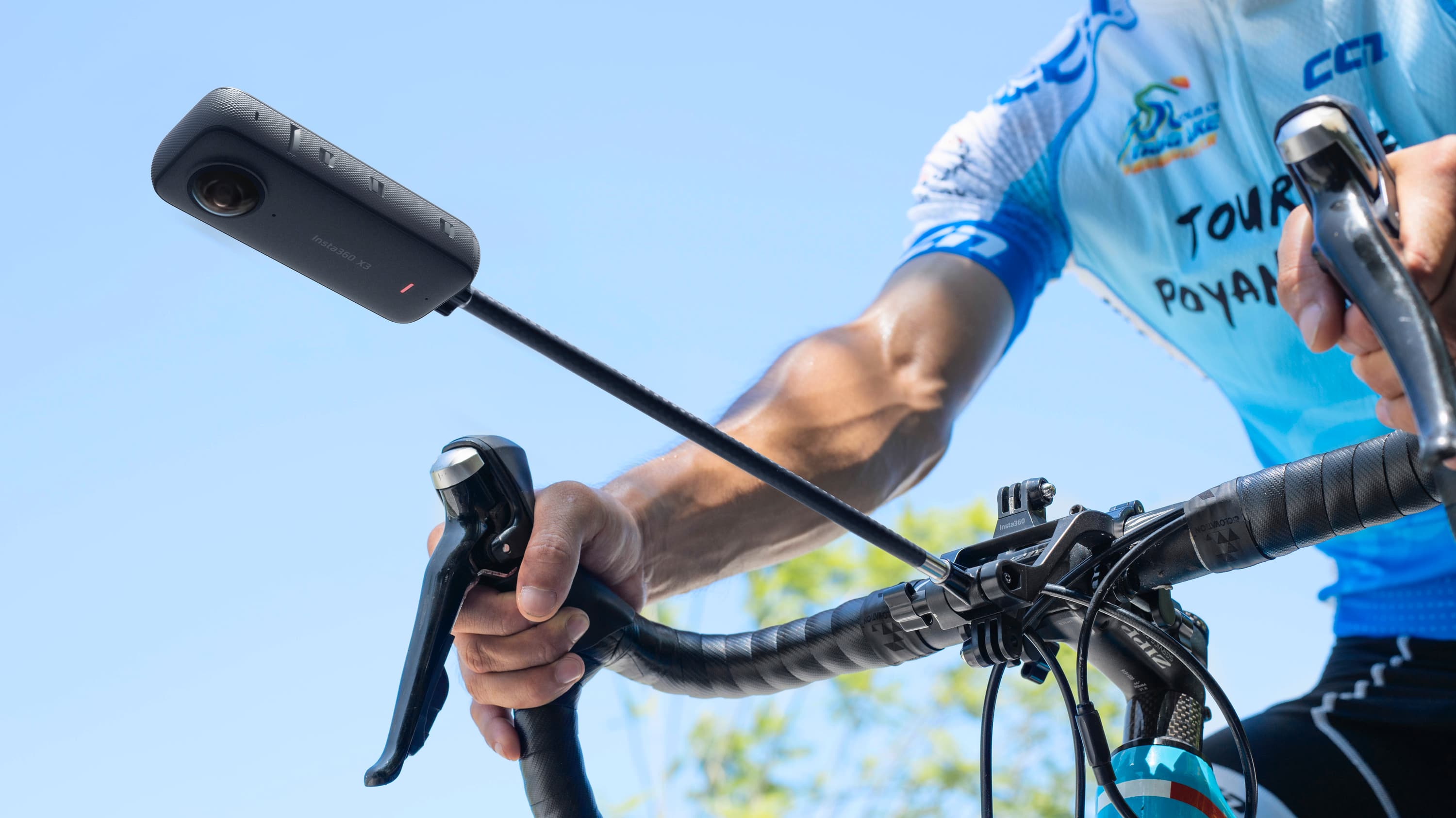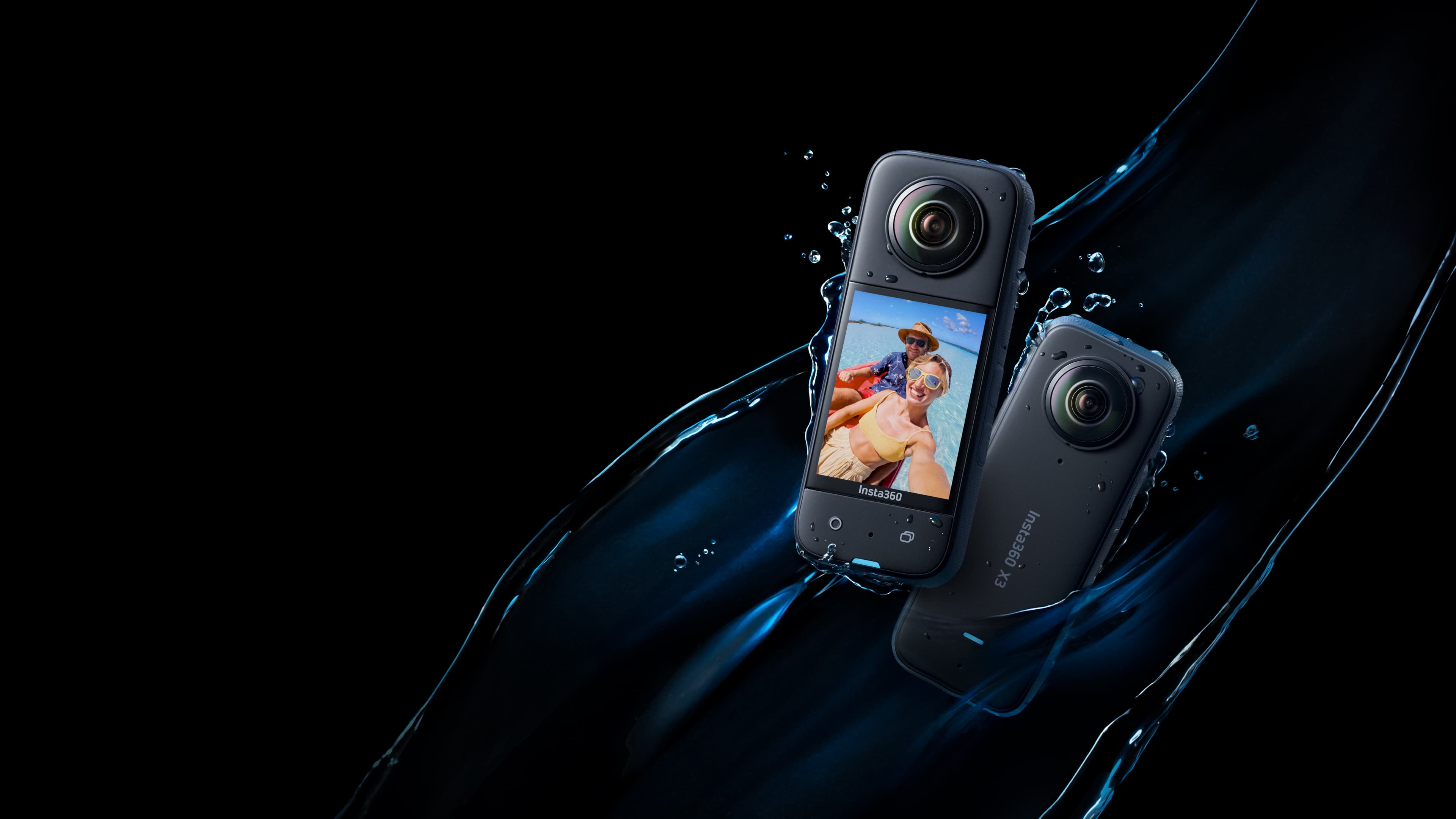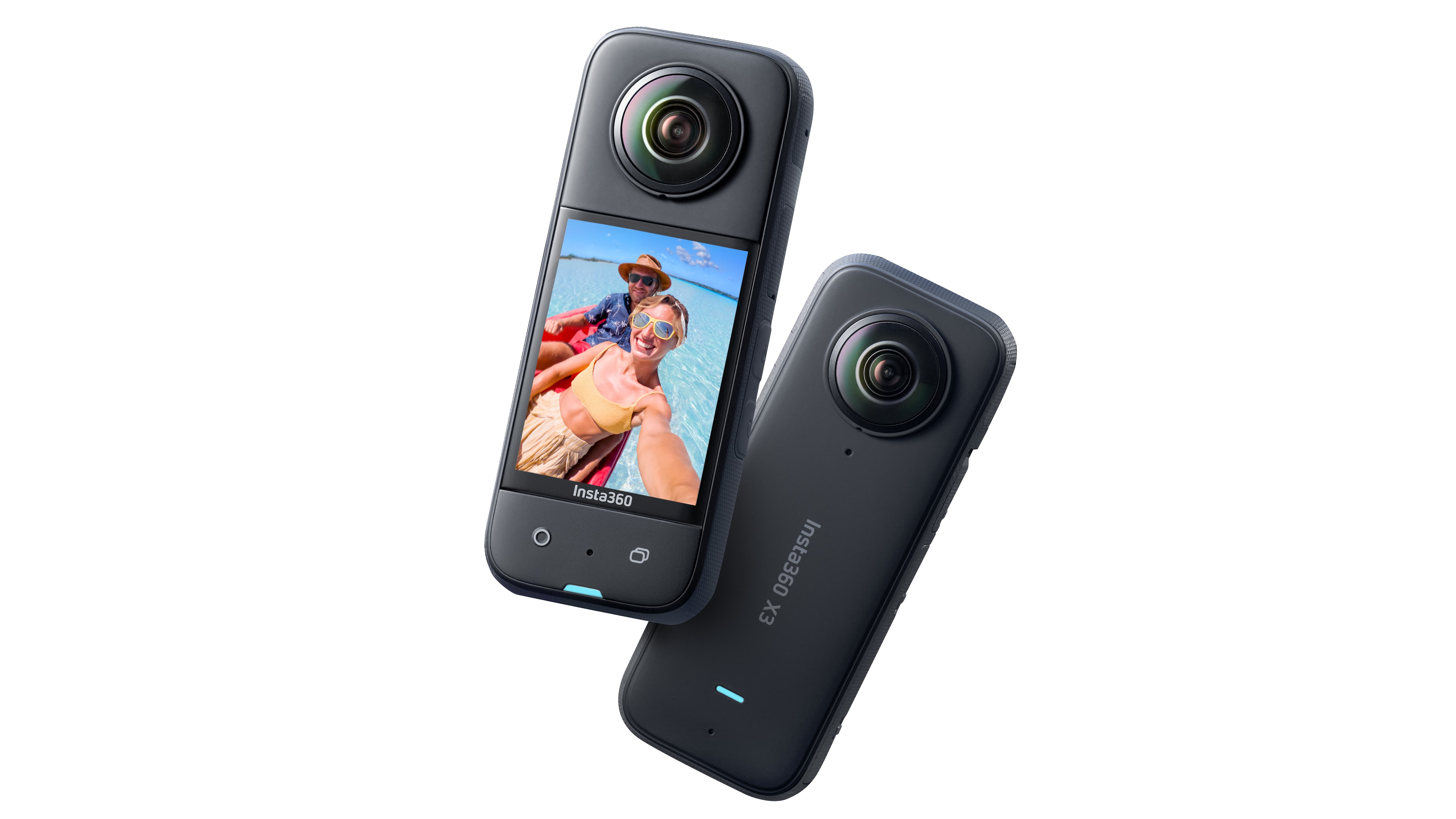Meet the Insta360 X3, the third generation of Insta360’s pocket-sized 360 camera
Now simply called the Insta360 X3, the new camera boasts bigger, better sensors and a new 4K single lens mode

Insta360 has dropped the ‘ONE’ from this camera’s name for the sake of simplicity, but otherwise this is an update of the pocket-sized Insta360 ONE X2, already one of the best 360 cameras.
The Insta360 X3 keeps the familiar ‘candy bar’ shape, which means it can easily slip into a shirt or trouser pocket, but comes with upgraded 1/2-inch sensors for a step forward in image quality and features. The 360 video resolution stays at 5.7K, but the resolution for still images has been boosted to a massive 72MP.

Insta360 says the X3 has been “built for the social age” and is reinventing the point and shoot camera – though as Insta360 says, with this camera you can shoot first and point later. That’s because it captures a full 360° image of what’s around it, and you can then ‘reframe’ your captured video to track a moving subject or pan across a scene. Anyone looking for the best camera for video should seriously consider a 360 camera because of this clever post-shoot reframing capability.
The only disadvantage is that reframed video is limited to an output resolution of 1920 x 1080 since it can only show a section of the full 5.7K spherical capture. However, the X3 has a new 4K Single Lens mode for action camera style shooting, with an optional ultra-wide 2.7K view. This dual-mode shooting style could make it one of the best cameras for vlogging especially for those who like to travel light and creative highly immersive content.

Insta360 X3 design and features
The Insta360 X3 is just a little larger than the X2, but has some important physical upgrades. These include waterproofing out of the box down to a depth of 10m/33ft, though we understand it will still need a dive case for underwater 360 video.
It also has a good-sized 2.29-inch touchscreen display matched up with four external buttons for controlling the camera features. The X3 also pairs up with the Insta360 smartphone app, can make many camera operations easier as well as offering wireless control via Bluetooth and Wi-Fi.
The app also offers AI editing tools including reframing and subject tracking, plus a Shot Lab feature with instructions on how to film 30+ “viral-worthy” effects. For those who like more control, there’s also a free desktop Insta360 Studio app.
Get the Digital Camera World Newsletter
The best camera deals, reviews, product advice, and unmissable photography news, direct to your inbox!


Other features in the Insta360 X3 include an 8K 360 timelapse feature and a Me Mode for creating “invisible” selfie shots without the need for reframing later. By “invisible”, Insta360 means its bundled extending selfie stick, which is automatically cloned out of both video footage and stills. A new Active HDR mode promises to reveal details in underexposed areas, and a Loop Recording mode simply keeps the last few minutes of video – you could use the X3 as a dashcam.
The Insta360 X3 uses the company’s tried and trusted 6-axis gyro and ‘FlowState’ stabilization for smooth footage, and its clever (if somewhat terrifying) ‘Bullet Time’ mode, where you swing the camera around your head for a Matrix-like movie effect.
The Insta360 is on sale as of now, and will cost $449 (about £389/AU$659)
Read more:
• Best 360 cameras
• Best cameras for video
• Best travel cameras
• Best cameras for vlogging

Rod is an independent photography journalist and editor, and a long-standing Digital Camera World contributor, having previously worked as DCW's Group Reviews editor. Before that he has been technique editor on N-Photo, Head of Testing for the photography division and Camera Channel editor on TechRadar, as well as contributing to many other publications. He has been writing about photography technique, photo editing and digital cameras since they first appeared, and before that began his career writing about film photography. He has used and reviewed practically every interchangeable lens camera launched in the past 20 years, from entry-level DSLRs to medium format cameras, together with lenses, tripods, gimbals, light meters, camera bags and more. Rod has his own camera gear blog at fotovolo.com but also writes about photo-editing applications and techniques at lifeafterphotoshop.com
